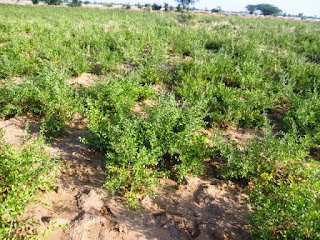The history of henna in Nigeria (part 2)
11:46 AMTHE — USE OF HENNA IN STAINING THE SKIN
No matter how it was introduced, by the 19th century henna was a widespread practice throughout West Africa. The Scottish commander Hugh Clapperton was sent on expedition in West Africa in the 1820s, through the Bornu Empire to Sokoto, the capital of the Fulani Empire (today in north Nigeria), and noted in several places the use of henna to dye men’s beards and women’s hands and feet.
While visiting Bida , in central Nigeria (which he calls Nyffee), Clapperton saw henna as part of the celebrations of Eid al-Fitr: “The new moon, having been seen last night, put an end to the fast of the Rhamadan… The women were dressed and painted to the height of Nyffee perfection: [their hair] dressed, plaited, and dyed with indigo; their eyebrows painted with indigo, the eyelashes with khol, the lips stained yellow, the teeth red, and their feet and hands stained with henna; their finest and gayest clothes on; [and] all their finest beads on their necks.”
In the remarkable life story of Baba of Karo (a Hausa woman from northern Nigeria, 1877-1951, whose autobiography was recorded by anthropologist Mary Smith and published in 1954), she described many details of Hausa wedding henna traditions in the early 20th century — the trope of the ‘reluctant bride’ who tries to escape the marriage is common throughout North Africa as well, as we saw in this Moroccan henna song (and in fact is common across the world):
Seven days before the marriage-day, the bride’s kinswomen catch her and rub her skin with henna; when they come to do this she runs away, and when they get her she cries and wails, she throws herself to the ground again and again crying because the time for marriage has come… Her friends lead the bride to her mother’s sister’s hut, she is her mawankiya , the ‘mother’ who will wash her for marriage. She talks to the bride and lectures her about behaving properly…
The henna is brought from the compound of the bride’s father and the grandmother comes again to put it on. Outside mawankiya ’s hut the girls are preparing the henna-leaves, and the drummers and singers are busy at the front of the compound. When mawankiya leads the bride out from her hut, her friends seize her arms and legs and hold her while she struggles. The girls begin to sing again, while the grandmother is putting on the bride’s henna they sing this song:
Save my life, hankaka , save my life, Save my life, hankaka , save my life,
On the day of marriage;
Save my life, hankaka , save my life,
Bazara has come,
Hankaka with the white breast,
White-breasted one, marriage has come.
The bride wants hankaka , the pied crow, to rescue her, so that they shall not give her in marriage…
Some of the girls go over to the bridegroom’s compound, if it is his first marriage too they will be putting henna on him… The bride stays in her mawankiya ’s compound for four nights; mawankiya puts henna on the bride’s arms and legs every day, and ties them up in leaves, but she doesn’t put the long henna-gourd on her hand and arm, so the girl just unties the leaves and pulls them off and runs off to play.
As Baba of Karo mentioned, grooms also receive henna, if it is their first marriage. This is especially important among the Tuareg, for whom the groom’s henna ceremony, called eghumi , is a community-wide time of songs and stories. The henna is applied by smith women known as tchinadan , who also serve the community as leatherworkers, griots, magicians, musicians, and ritual specialists.
Henna is commonly done not only for weddings, but also for the end of Ramadan, to celebrate the birth of a child, and as a general cosmetic any time women want to look beautiful. It is also used medicinally, as in other areas, to treat burns and blisters (Muhammad and Muhammad 2005).
Adapted from a post on Eshkol haKofer.














0 comments